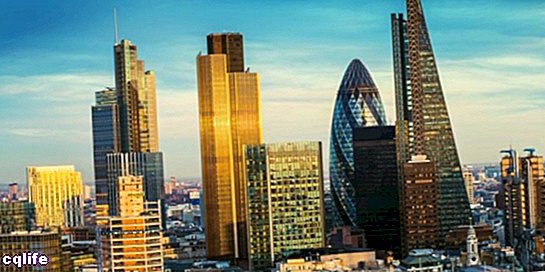We explain what a city is and some of its characteristics. Also, the main cities of the world and information about them.

What is a city?
A city is the name given to the urban settlements of the population human of a nation, that is, urban spaces that are densely populated and artificially modified to house communities human beings, endowed in turn with political, economic and administrative functions and attributions.
Every city is distinguished from rural centers in, fundamentally, the presence of industrial, economic and bureaucratic activities other than agriculture, of urbanizations in which vertical buildings (buildings or skyscrapers) predominate, and above all of the administrative centers of political power. (like capitals).
There is no single criterion to define what a city is and what is not, at least based on the number of inhabitants. A city can have hundreds of inhabitants, or millions of them, like the great American megalopolises with more than 20 million citizens residents.
In many cases, in addition, cities comprise a more or less similar urban ring (the metropolitan area) of "bedroom" populations more or less logistically, administratively and urbanistically integrated into the "heart" of the city. city.
In fact, large cities have had to organize themselves on the basis of smaller geographic and political units in order to be governed. Reason for which they are divided into municipalities or municipalities, equipped with mayors and local or neighborhood representatives.
This classification also had its impact on the constitution of the democracy Republican, since the inhabitants had to be registered and organized to be able to exercise the vote in an orderly manner.
Another characteristic of cities is their permanence in the weather, that is, they do not change location. Instead, they tend to expand, encompassing more and more territory as their population grows, a phenomenon known as theexpansion of the urban area.
The phenomenon of expansion of urban walking It began centuries ago, when the end of the Middle Ages (approximately 15th century) brought with it the emergence of urban life as the dominant model, above life in agriculture, causing a considerable exodus from the countryside to the different western cities. This coincided with the rise of the bourgeoisie as the new ruling class, instead of the feudal lords (landlords).
Currently, the largest percentage (54%) of the world's population is located in the different existing cities. Paradoxically, similar urban population requires a food production, coming from the agricultural world, increasingly larger, since cities do not usually find the primary sector of the industry, but the secondary, the transport sector and the sector services.
The main cities of the world

The largest and most important cities in the world today are capitals (historical or economic) and are often home to millions of people. Some of the most renowned and important economic and population are:
- Tokyo The capital of Japan, has a population of more than 13 million inhabitants (37 million counting the metropolitan area) in a total area of 2,187 km2. It is densely populated (6,300.89 inhabitants / km2) and is the main city in the world in terms of GDP (Gross Domestic Product).
- New York. The famous “capital of the world” of the United States, is the most populated city in the country and the second most populated in the world. continent (after Mexico City). It has a total population of more than 22 million people counting its metropolitan area, in a total area of 1,214 km2.
- Seoul The capital of South Korea since its creation in 1948 (after the Korean War), is the fourth economy metropolitan area of the world according to its GDP and has 24.5 million inhabitants in its metropolitan area. Its surface area of 605.25 km2 is crossed by the Han River, in which there are important global economic ports.
- London. Founded by the Roman Empire almost two millennia ago under the name ofLondinium, the capital of England is a city of enormous historical and cultural heritage, home to important museums and the oldest underground in the world. In its surface of 1,572 km2 there are 13,879,757 inhabitants (counting the metropolitan area) and it is the largest financial center in the world.
- Paris. The capital and the most populated city in France, it was also founded by the Romans in the 52nd century BC. Its surface area of 105.4 km2 is home to almost 13 million people (counting its metropolitan area). Along with London, it was during the 19th century and part of the 20th an important city in the technological and industrial development of Europe, being the host of numerous scientific and technological exhibitions. It is considered an epicenter of fashion, the gastronomy and luxury.
- Shanghai. It is the most populous city in China and one of the most populous in the world, with more than 23 million people in an area of 6,340 km2. Located in East China, in the delta of the Yangtze River, it is an important tourist center given its temples and monuments, as well as being the star of the development of the People's Republic of China, which is why it is considered its economic capital.
